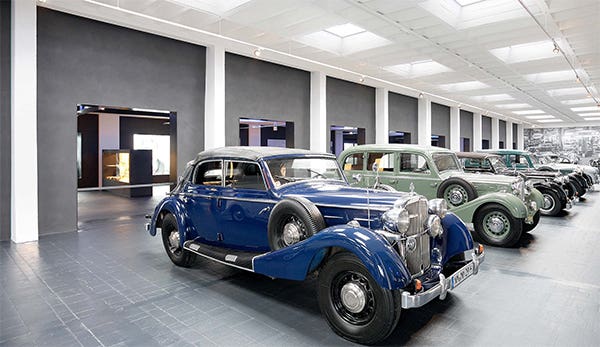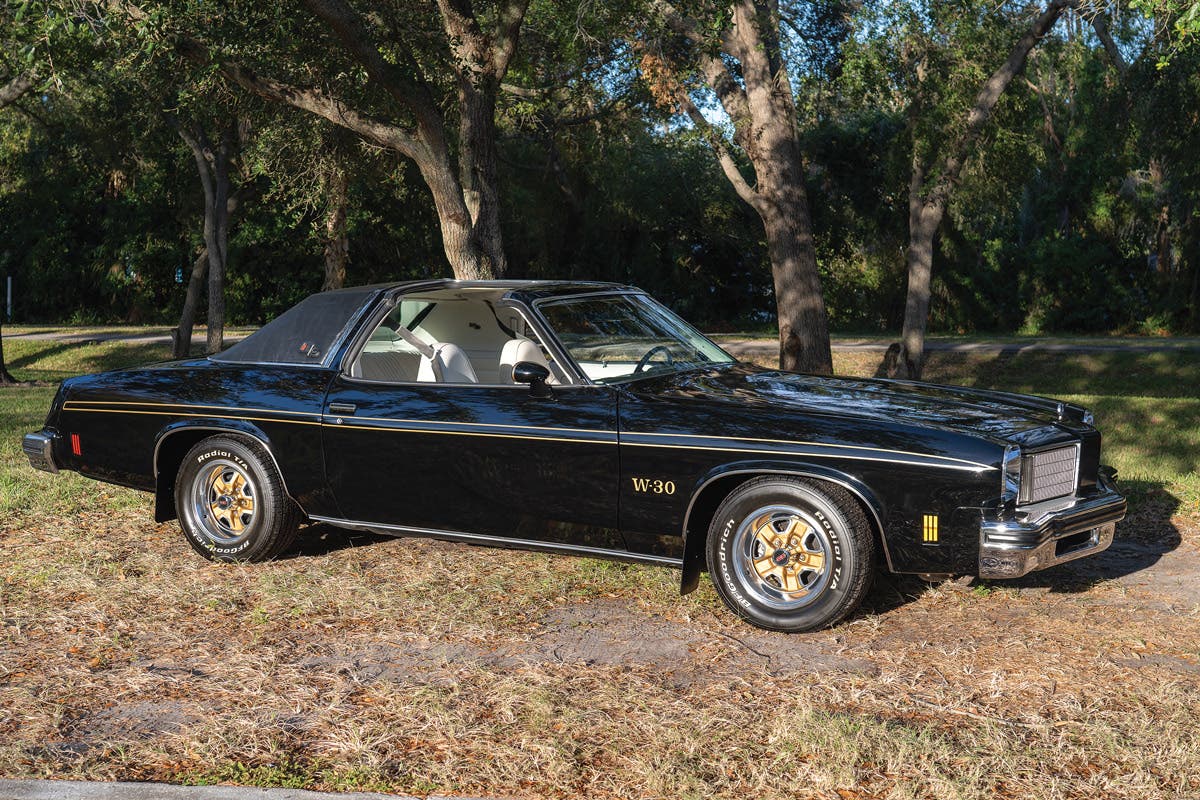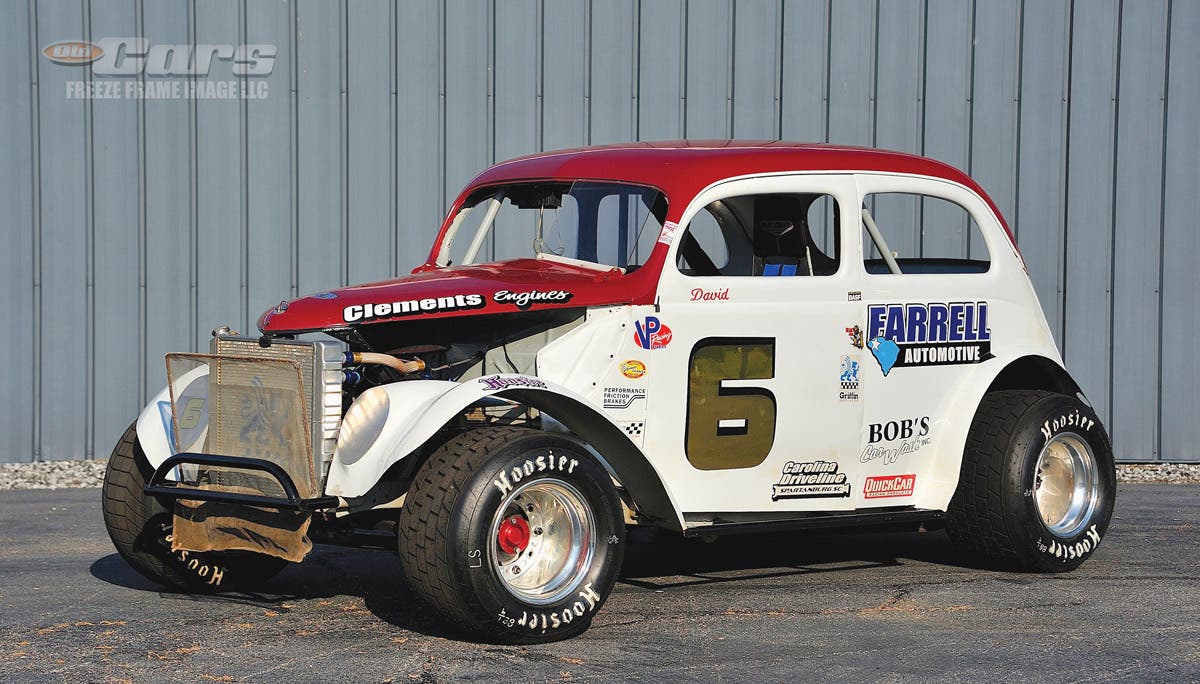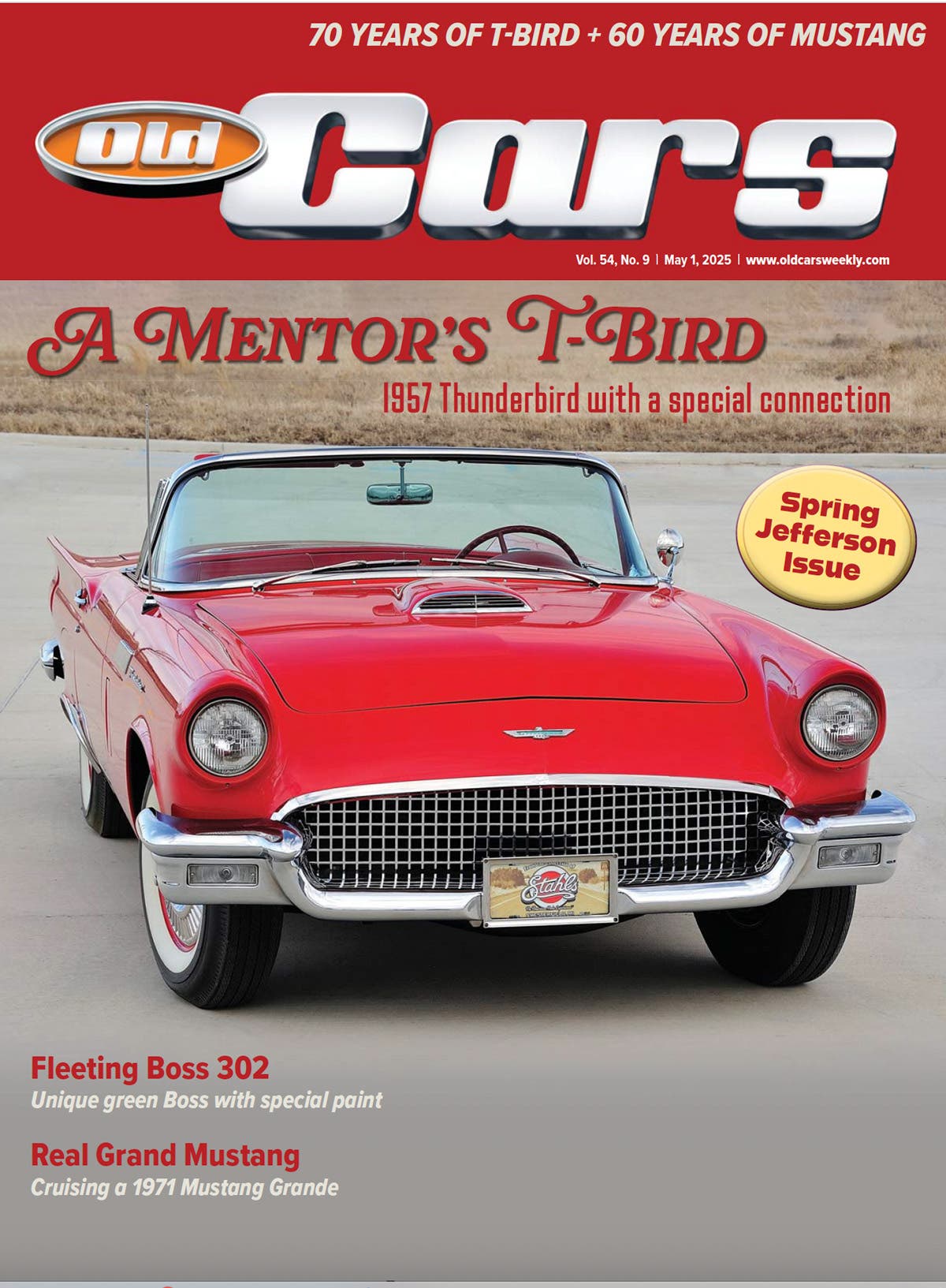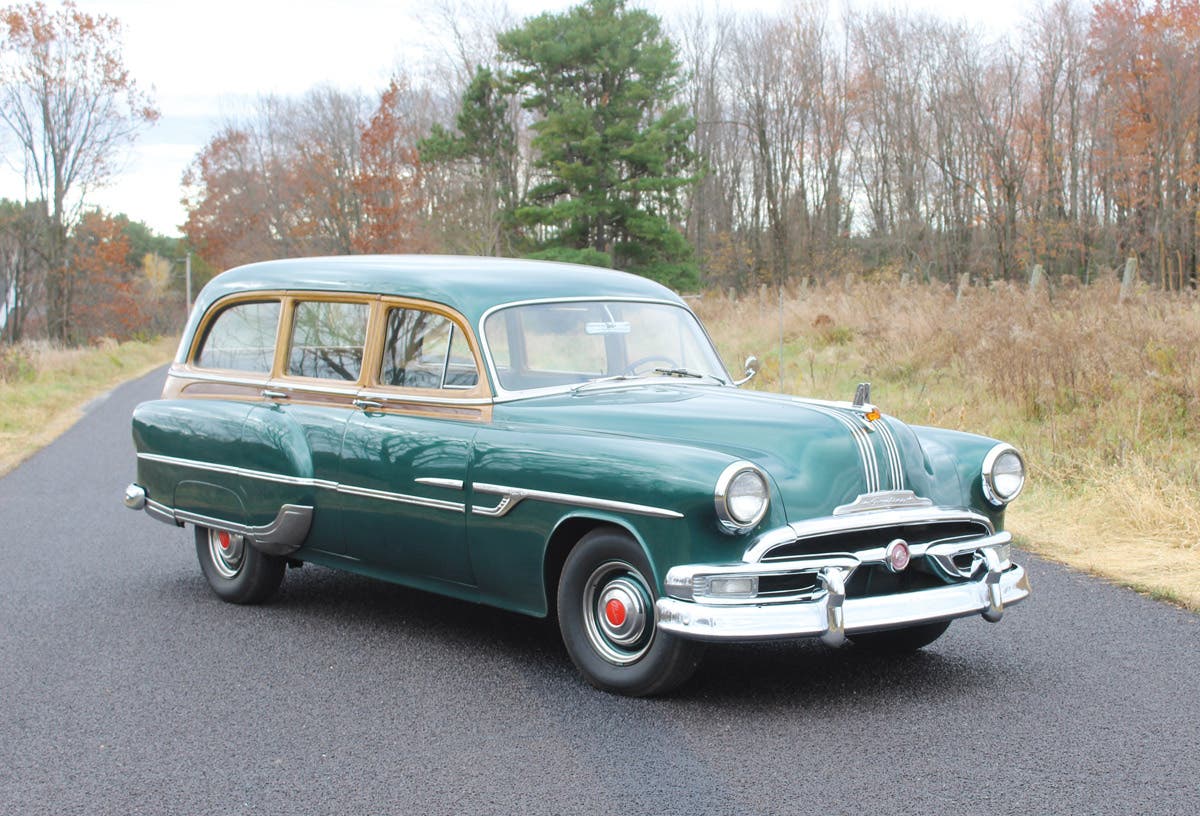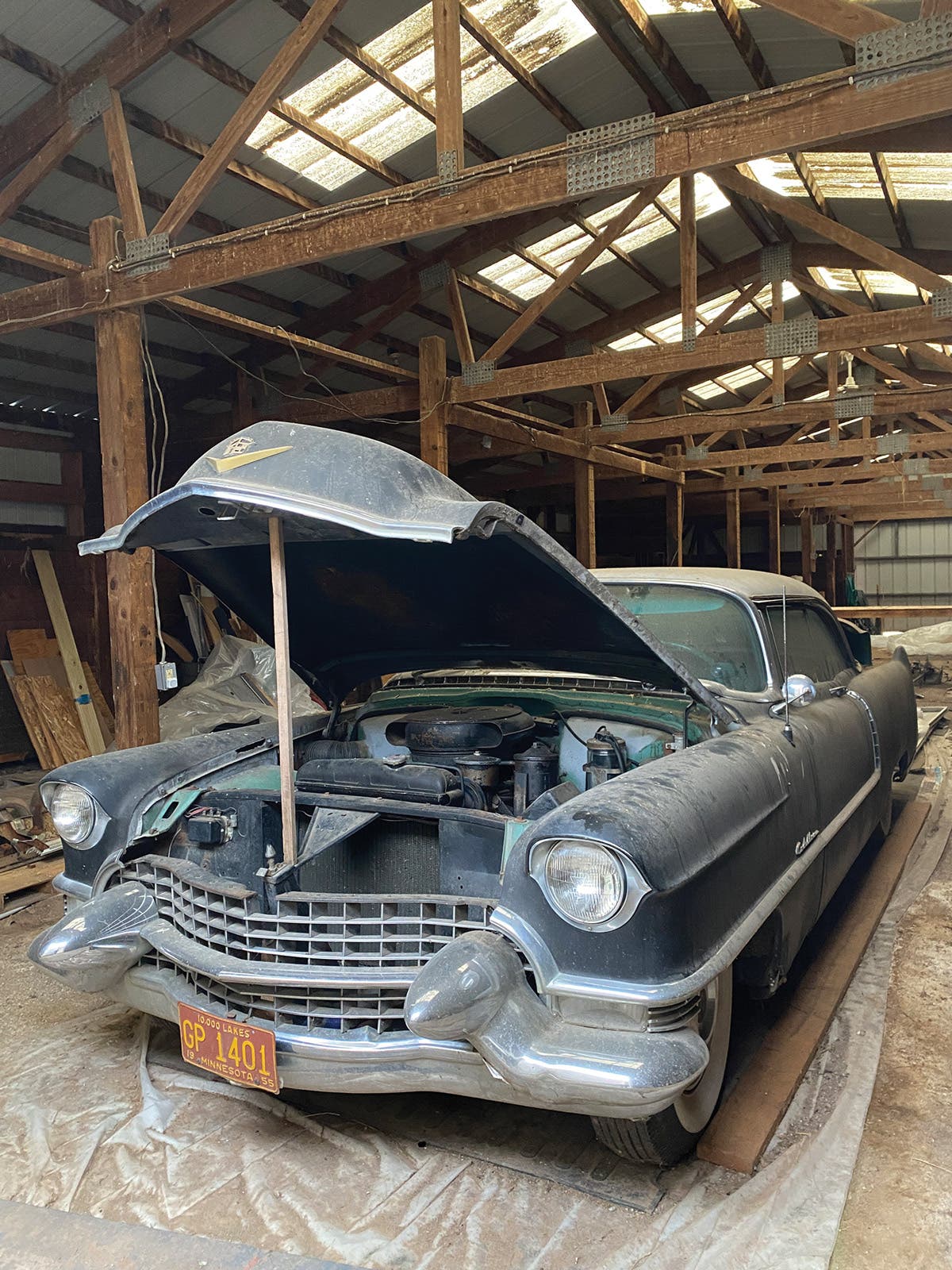Car of the Week: 1937 Willys sedan
Earl Pamperin admits he probably didn’t fully understand what he was getting himself into when he decided to bring his rare 1937 Willys sedan back to life almost 25 years ago. That’s probably a good thing, because he might have been scared off if he had fully grasped how challenging it would be.
Earl Pamperin admits he probably didn’t fully understand what he was getting himself into when he decided to bring his rare 1937 Willys sedan back to life almost 25 years ago.
That’s probably a good thing, because he might have been scared off if he had fully grasped how challenging it would be.
“It was the first car I’ve done. It took me eight years. I guess when I look back on it, you’d rather have started with a complete Pierce or something” laughed Pamperin, a resident of Juneau, Wis.
The car was actually a bit of a barn find, at least for Pamperin, back in 1981. That was the year he got married and saw the car for the first time. “[My wife’s] late husband had bought it from the estate of a dentist,” Pamperin said. “They had bought it, used it in their wedding and kind of done an Earl Scheib kind of paint job on it, just so they could drive it. Then he died — he was killed in a car accident — and the car sat in a barn until I met her.
“She took me over to see it one day, and I thought, ‘Geez, that would be a good car to have at home.” It sat there for a good two years after we got married … but we eventually dragged it home and I started going to car shows in about ’86, looking around and seeing what guys were doing.”
What most guys were doing at the time, and had been doing for years, was turning the small and economic Willys of that time period into street machines and hot rods. Custom Willys from the era are not hard to find, but all-steel and original ’37s are another story.
Pamperin knew immediately that the couple’s ’37 was not destined for an engine transplant, tubbed rear end or flame paint job. “I wasn’t really happy with all the cars guys who were cutting them up to make into hot rods,” he said. “I thought there was too much car there to start cutting on it.”
That Willys cars from the late-1930s are rare and desirable today is an unlikely story in itself. Even with a complete redesign that year, the 1937 Willys car lineup was far from the most outwardly attractive menu on the new car scene. Still, there has been something appealing and enduring about the Willys’ more rounded lines and sloping roof lines. Street rodders have found the cars’ short wheelbase and light weight help them go fast, and in recent years, restorers have found the cars worthy candidates for extensive back-to-original resurrections.
Willys had introduced its small, simple, four-cylinder Model 77 in 1933. Production numbers during those Depression years were tiny, and less than 45,000 Model 77s were built over the span of four years before the lineup got a new look in 1937.
That year, the Willys was given a blunt grille with a rounded nose, as well as headlamps in pods mounted atop the fenders. The new car was christened the Model 37, and more than 51,400 were built for the model year, although production figures seem to vary depending on your source.
The car’s holdover 134-cubic-inch L-head four produced a modest 48 hp and shifted through a three-speed manual transmission. The cars eventually became somewhat unlikely favorites of weekend racers, who installed overhead-valve V-8s in the original Willys chassis, while keeping the sleek, lightweight body. Eventually, the “gasser” Willys cars would become beloved icons of the street and strip, particularly the 1941 coupes.
The Model 37 ran on 100-inch wheelbases with hydraulic drum brakes at all four corners and semi-elliptical leaf springs softening the harsh ride of the front and rear solid axles.
Aside from its general shape and profile, perhaps the 1937-’38 Willys’ most identifying feature was the assemblage of narrow, chrome spears that ran horizontally backwards from the nose. The spears were bisected up the center of the hood by another lengthy chrome piece that reached from the windshield to the bottom edge of the curved bow.
“When we got the car, there was a bag full of those chrome strips in the trunk,” Pamperin said. “But they weren’t on the car. The guy who had done some bodywork on this car in the past had even filled up the holes for the strips. When I stripped the car all down, these holes were there.
“What happened at the time was that, of course, Willys was going in and out of receivership and they were having financial problems, so the factory was sending the cars out and promising the dealers they would send these chrome strips along. And, of course, that didn’t always happen.”
The arrangement did provide Pamperin with enough trim pieces to reconstruct most of his Willys grille work, although he did have to order some more stainless and get some of the pieces made. The trim bits weren’t the only things Pamperin had to tackle. The car needed new floors throughout, a new interior and plenty of elbow grease on the body.
“We tore it all down and I got a guy to start the bodywork, but he lost interest,” Pamperin said. “He had worked on the actual body, and then sort of threw it back to me. Well, after watching him I figured I could do all the stuff he was doing. I took all the fenders and doors and I did all the bodywork on all that. Then I met a body guy and he kind of showed me how to get it to look nice …
“I couldn’t salvage anything in the interior. There had been mice in it. I think we found, like, seven nests of mice in there from the barn. So I took it to a guy in Fort Atkinson [Wis.] and he did all the new upholstery.”
And, of course, there was the requisite amount of salvage yard visits, Internet browsing and swap meet networking involved in any challenging restoration. Genuine Willys parts are not easy to come by, but Pamperin stuck with it until he found almost everything he needed.
“It was just a progression of things and finding stuff. I found a guy in Pennsylvania that had these ‘new old stock’ hubcaps. And I found a guy in San Francisco that had these beauty rings, and another guy had a steering wheel. A guy in Los Angeles, he calls himself Willys Replacement Parts — you can get a lot of stuff from him.
“I sent the bumpers out to have them re-plated. I had the frame sandblasted and painted and we started from there, building up the springs … My body man friend painted it, and I had the engine rebuilt, but I pretty much did everything else myself.”
The engine in his ’37 is not factory issued, according to Pamperin. “We don’t think it’s the original motor, because it’s got the word ‘Jeep’ on it, and they didn’t use the word ‘Jeep’ until World War II,” he said. “So we think somebody had trouble and replaced the motor at some time. I’m thinking it would have been an early ’40s. It might have happened in the late ’40s and they put a motor from the early ’40s in it.
In a nod to non-originality and better performance, Pamperin also put a non-stock carburetor and intake on the Willys, mainly so the car could keep up better on the highway.
“It ran OK up until about 40-45 [mph], but I wasn’t happy with it beyond that,” he said. “So I ran into a guy who said ‘I’ve got a carburetor that will fix that for you,’ so I got a Carter carburetor for it. The original manifold was actually cracked and I went to a junkyard and robbed an intake and exhaust from an old Jeep Wagoneer, I think it was, from the early ’50s. The Carter carburetor matched that intake, so it’s got a bigger hole in the intake. Now it does 55 easy.
“But it’s got to be a relatively smooth road,” he added with a chuckle. “With those solid axles, you hit a bump at 50, it’s rough.”
Pamperin discovered during his work on the body that the car wore tan paint when it left the factory, so that’s what it wears today. The tan interior adds to the sedan’s low-key appearance, which is OK with Pamperin. He doesn’t mind if the car doesn’t necessarily get all the attention such a rare survivor probably deserves.
“People don’t know what it is, or they walk by it because they don’t really notice it too much,” he said. “Or they ask me about the color and say, ‘Why did you paint it primer color?’”
Pamperin certainly never set out to make a museum quality showpiece out of his Willys, but the car did spend three years in the Wisconsin Automotive Museum in Hartford, Wis., after he completed its restoration. “Yeah, we were doing an addition on our house and putting all the kitchen stuff in the garage,” he said. “So that worked out pretty good!”
SHOW US YOUR WHEELS!
If you’ve got an old car you love, we want to hear about it. Email us at oldcars@aimmedia.com
*As an Amazon Associate, Old Cars earns from qualifying purchases.



